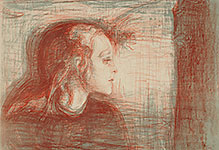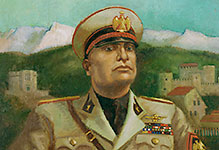
Portraits
Politicians and Statesmen, Painters' Portraits and Self-Portraits, Scientists, Rulers, Emperors and Kings, Musicians and Composers, Writers and Poets.

#03050235
Cinerary statue,called "Pluto", 550-530 BCE. H:160 cm...

#03050243
Lid of a funeral urn, from Chiusi. H: 45 cm N.I.8480

#03050249
Colonne avec un buste de Nerva - column with a bust of Emperor Nerva (96-98-CE)....

#03050250
Colonne avec un buste de Trajan - Column with a bust of Emperor Trajan (98-117 C...

#03050253
Portrait presume de Benvenuto Cellini - Presumed portrait of Benvenuto Cellini...

#03050254
Minerva,also called Roma. The headless body of the statue was found and restore...

#03050255
Head of Minerva.This is the head ordered by cardinal Mazarin for his headless M...

#03050257
68-69 was the year of four emperors: Galba, Otho,Vitellius and Vespasian.Galba w...

#03050258
Emperor Vespasian. Porphyry,Sicilian jaspis,alabaster....

#03050319
Portrait statue of Socrates, Greek, ca. 200 BCE - 100 CE. According to both Pla...

#03050322
Bowl with basket-like handles and female heads on the rim, Greek, ca.600 BCE. Th...

#03050325
Cameo of Agrippina the Elder, Roman, probably made in Italy, 37-41 CE. The cameo...
